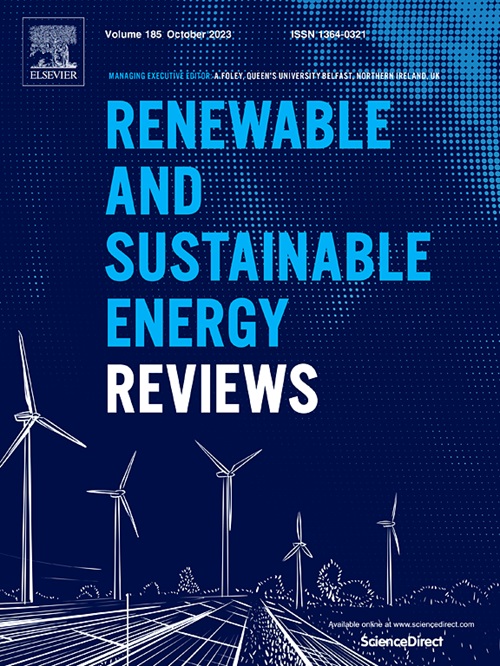A comprehensive 5E analysis of synthetic natural gas production through direct air capture and renewable hydrogen: Based on a specified-scale residential application
IF 16.3
1区 工程技术
Q1 ENERGY & FUELS
引用次数: 0
Abstract
Synthetic natural gas (SNG) production through direct air capture (DAC) and renewable hydrogen could be a potential solution to address the scarcity of natural gas resources, reduce CO2 emissions from the atmosphere, enable the storage of renewable energies, and improve sustainable production. In this study, a renewable grid-connected SNG production system is analyzed, based on DAC technology and green hydrogen as input feedstock, to meet the natural gas consumption needs of a specified-scale residential application year-round. This energy system incorporates a wind farm as a renewable energy supplier to support hydrogen production and CO2 absorption in the methanation process for a residential application in Sankhast city, North Khorasan, Iran. The aim of this research is to present significant findings regarding the implementation of such a system in Iran, assisting engineers in testing and applying it under real conditions. To analyze the system dynamically from energy, exergy, exergoeconomic, economic, and environmental (5E) perspectives, Aspen Plus and EES software were utilized for modeling and simulation. Additionally, the TOPSIS method, a multi-criteria decision-making approach, was employed to perform multi-objective optimization of the SNG production process and the capacity of renewable wind power. The results revealed that the system produced high-quality SNG with 98.7 % methane purity while addressing SNG shortages during peak months by storing excess SNG produced during hotter months, with the highest storage capacity of 13.5 km3 reported in July. Furthermore, the system achieved energy and exergy efficiencies of 31.17 % and 18.1 %, respectively, and sold the highest excess power of 1240 MWh in July. In the economic analysis, the highest cost was attributed to investment, with the levelized cost of energy (LCOE) reported at 8.65 $/kWh, where the purchase of wind turbines represented the largest expenditure. Finally, environmental analysis reported that the system could potentially reduce CO2 emissions by 1540 tons annually.
求助全文
约1分钟内获得全文
求助全文
来源期刊

Renewable and Sustainable Energy Reviews
工程技术-能源与燃料
CiteScore
31.20
自引率
5.70%
发文量
1055
审稿时长
62 days
期刊介绍:
The mission of Renewable and Sustainable Energy Reviews is to disseminate the most compelling and pertinent critical insights in renewable and sustainable energy, fostering collaboration among the research community, private sector, and policy and decision makers. The journal aims to exchange challenges, solutions, innovative concepts, and technologies, contributing to sustainable development, the transition to a low-carbon future, and the attainment of emissions targets outlined by the United Nations Framework Convention on Climate Change.
Renewable and Sustainable Energy Reviews publishes a diverse range of content, including review papers, original research, case studies, and analyses of new technologies, all featuring a substantial review component such as critique, comparison, or analysis. Introducing a distinctive paper type, Expert Insights, the journal presents commissioned mini-reviews authored by field leaders, addressing topics of significant interest. Case studies undergo consideration only if they showcase the work's applicability to other regions or contribute valuable insights to the broader field of renewable and sustainable energy. Notably, a bibliographic or literature review lacking critical analysis is deemed unsuitable for publication.
 求助内容:
求助内容: 应助结果提醒方式:
应助结果提醒方式:


